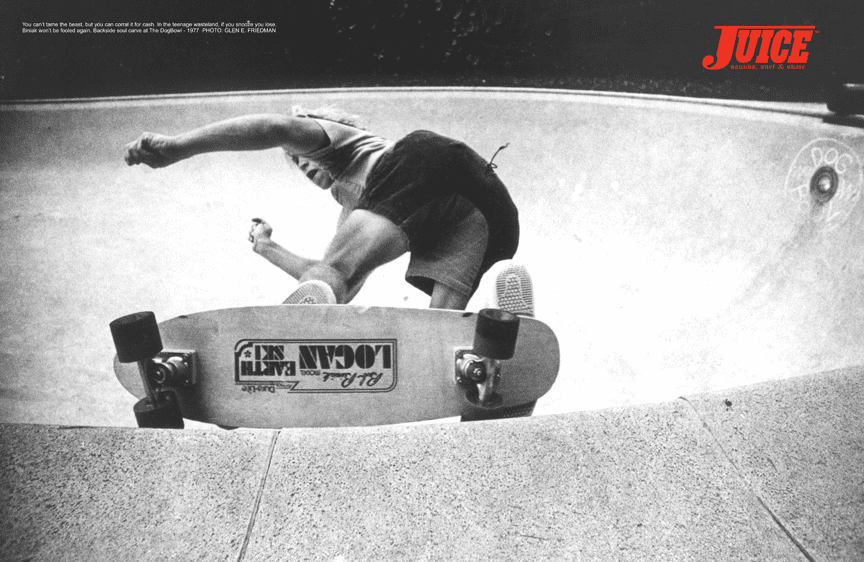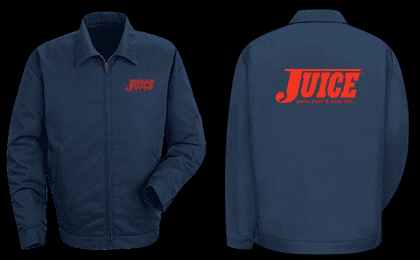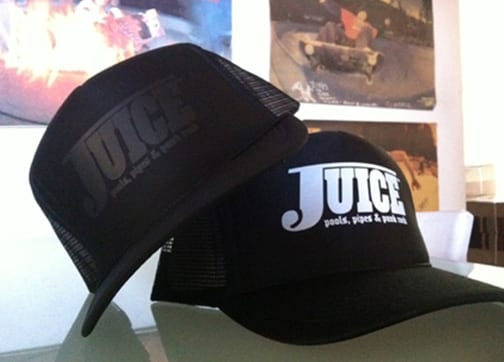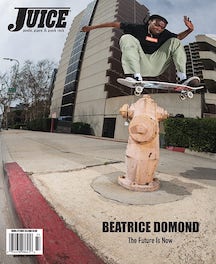INTERVIEW AND INTRODUCTION BY STEVE OLSON
PHOTOS BY C.R. STECYK III AND GLEN E. FRIEDMAN
From speed demon to all-out ripper, one of the original Zephyr team riders, Bob Biniak, was a man to be seen and heard. From radical speed to super aggressive frontal and backside assaults, biniak could and would throw down with the best of them. A straight-out pimp-mack-mother-F$#*^ng daddy, Biniak was and still is no joke. Read on people; read on, and you’ll see what I’m talking about.
State your name for the record.
Bob Biniak. They used to call me Bob “The Bullet” Biniak.
Why?
I was the fastest guy on the team, so when they made my model they used the bullet, because of the speed.
“The crew was Muir, Wentzle, Constantineau, Alva, Adams, Humpston and myself. We hung out daily.”
How fast?
Sixty-three miles an hour.
What kind of wheels?
The fastest – aluminum hubs with about a quarter inch of urethane, custom-made wheels and custom-made precision ball bearings.
Was this with leathers?
At first it was without anything, just shorts and a T-shirt. Then when I went 63, I had full leathers and a helmet. At the Signal Hill contest, everyone had the lay-down luge boards and I had a 30 inch stand-up skateboard. I just went for it.
When did you start skateboarding?
I started in the late ’60s. When there was no surf, we’d go skate.
Who?
I’m talking about Jay Adams and a crew of us that hung out in Dogtown.
Explain what Dogtown is to people.
Dogtown is Venice and the beach area south side of Santa Monica and Venice. A few of us lived there including Wentzle Ruml, Jay Adams, Muir, Humpston and Paul Constantineau. Later, Alva moved down to Dudley Court – all of us skated together.
This was before the Zephyr deal?
Yes, this was before Zephyr. We were making our own boards out of whatever wood we could find. One day, I built a board in wood shop and right after school, I headed over to Paul Revere. I had built this unreal board and I thought I was gonna rip on it. I jumped on and hit the bottom, and the board snapped in half and I went head first, flying across the cement. I went back the next day with a thicker board and tried it again. And then when the urethane wheel came out, skateboarding changed. You could actually control your skateboard. It was revolutionary. We went from riding banks to riding vertical stuff. And as far as I can remember, we were the first to ride vertical stuff.
What about Stacy Peralta?
He did well for himself, but he wasn’t one of the pimps. He couldn’t hang out with the boys at night. He had talent, I don’t take anything away from him for that; he just wasn’t one of the crew. The crew was Muir, Wentzle, Constantineau, Alva, Adams, Humpston and myself. We hung out daily.
How did the whole Zephyr scene come about for you?
First of all, Jeff Ho had the surfboard shop and the Zephyr surf team. And we all wanted to hang out there and get him to make our boards.
How did you get picked for the Z Team?
Well, Ho owned the shop with his partners Stecyk and Skip, and they had the surf team. Then they decided to have the Zephyr skateboard team. Ho would see us skateboard and pick who would be on the team.
There were other kids you skated with that didn’t make the team?
Yeah, there were friends of ours that were skaters and they were hot, but they just weren’t up to par. They didn’t have the same attitude. Not only did you have to skate, but you had to have the attitude too. If you didn’t have it, you were out.
What about the team practices?
We would all skate on Bicknell Hill and Ho would watch us and tell us, “Try this” or “Do that”. It all came from surfing maneuvers. Before we rode Paul Revere, we were riding hills and doing these low carving turns and doing big cutbacks in the driveways. Then we found the banks and really started surfing the cement.
Once you got on the Z-team, you were traveling to Del Mar and you’re just a kid.
Yeah, I was only fifteen and we were traveling and doing exhibitions, contests, and photo shoots. At first we were just competing against each other, then we go to the contest and the magazines start coming out and we were hot. Like I’ve said before, Del Mar was like taking a hockey team to a figure skating contest. We didn’t listen to anybody. We were radical and we did our own thing. Jeff Ho had to lobby with the Skateboard Association because they wanted to throw us out of the contest.
Why?
We were ripping the ramps up, riding them in the middle of the night. Jeff was always smoothing everything out. We were all just young kids and we did what we wanted to do, and we had fun doing it.
And then the team split?
Yeah, and it was unfortunate. There was so much talent on the team that after the Del Mar contest, money was being thrown at us. We had a decision to make. Ho was trying to put together money to keep us all together, but we were like, “Money! We don’t have a dime, we come from Dogtown. I want this, I want that.” And the unfortunate thing was that we didn’t stick together because if we had hung together for another six months, we would have had some big sponsorship from some big company. Instead, we all went our separate ways. Wentzle Ruml and I went to Sims, Tony went to Logan Earth Ski, Stacy went to G&S. Then, I left Sims and went to Logan because they offered me a better deal with some side perks.
Now you’re shopping deals?
We were shopping ourselves, because we’d been exploited already. Now we wanted to make some money. Then Tony started Alva Skateboards, and these guys from New York came in and started Dogtown Skateboards. We got Wes Humpston and Muir. I had a piece of the Dogtown action. My model was the first one, and then they made a Muir board. And then Stacy started his gig with Powell Peralta.
You’re skating with your boys, and then all of a sudden you’re skating against each other?
Well, everybody was like, “I’m the best.” Certain people could do things better than other people. Tony Alva was good, but in the pipes, he could eat my nuts. We were all skating for different companies but we still sessioned together. We were just riding different boards.
How was it when you got your first photograph in a magazine?
It was a big deal and it got me off. I loved that attention and I wanted more and more and more and more. I wanted to be in every magazine I could be in. I wanted those cameramen there and I knew those pictures would get in the magazines. I dug it.
BOB BINIAK R.I.P.
FOR THE REST OF THE STORY, ORDER JUICE MAGAZINE ISSUE #52. PLEASE CLICK HERE FOR MORE INFORMATION.
SHARE THIS POST:
- Click to email a link to a friend (Opens in new window)
- Click to share on Tumblr (Opens in new window)
- Click to share on LinkedIn (Opens in new window)
- Click to share on Pinterest (Opens in new window)
- Click to share on Twitter (Opens in new window)
- Click to share on Facebook (Opens in new window)
- Click to share on Reddit (Opens in new window)
- Click to print (Opens in new window)











